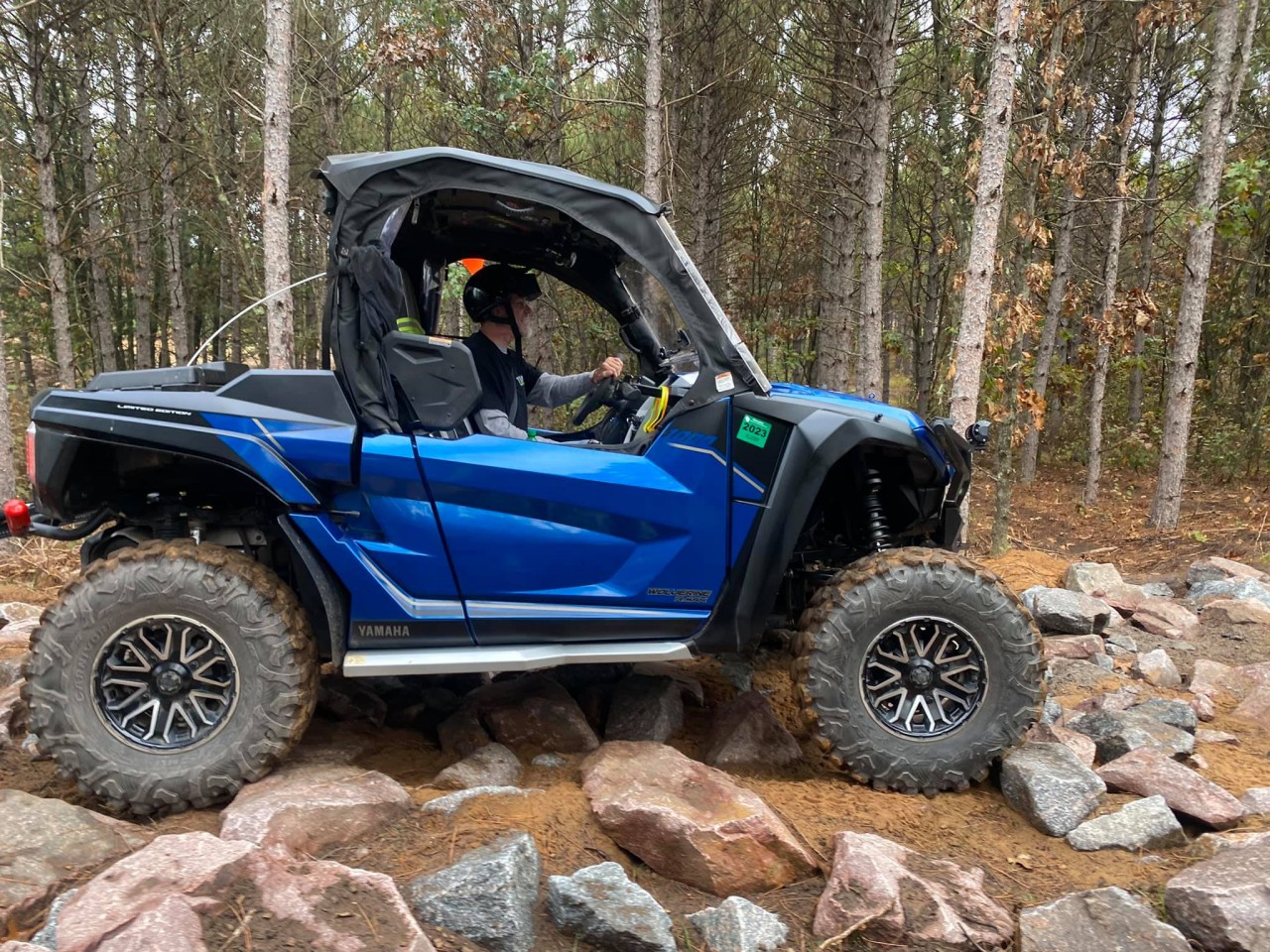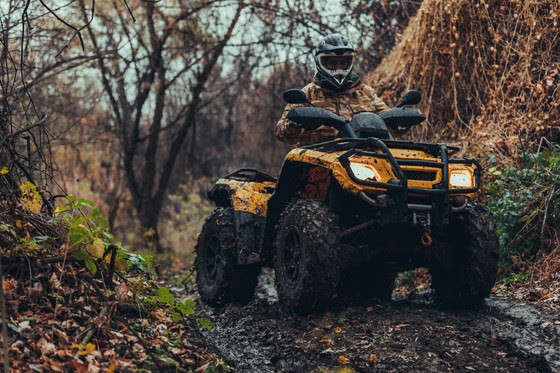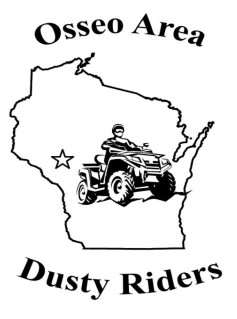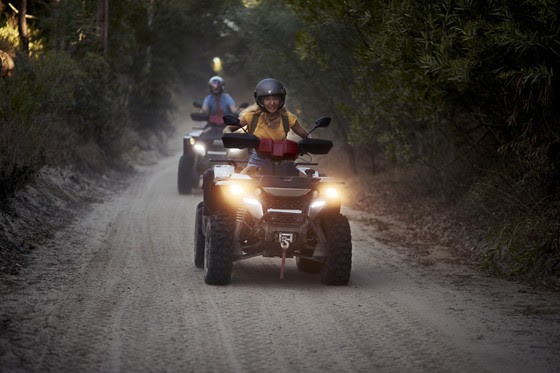December 10, 2021
To: Wisconsin Department of Natural Resources Staff
This email address is being protected from spambots. You need JavaScript enabled to view it.
Re: Comments – ATV and UTV Trail Guidelines Document
The Wisconsin ATV/UTV Association (WATVA) appreciates the opportunity to submit our comment on the proposed ATV and UTV trail guideline draft.
To make our input easier to review, we have made some general comments regarding important issues.
- WATVA applauds the Wisconsin DNR effort and active support of numerous modes of recreations as well as recognizing the importance of making motorized recreation available on Wisconsin's public lands.
- We feel that it is important to accurately represent what it can and should take to create trails, it's not to be taken lightly. There will always be cynics who don't want any ATV or UTV use on public lands, but by using introspective guidelines, it is possible to provide opportunities to use public lands that upholds all the responsibilities that public land managers have, and our sport will be provided for in a way that minimizes impacts to resources and works with the land.
- With the existing regulations and requirements for trails already in place, the realities of what it takes to create fun filled experiences can be daunting, but this document does accurately represent the work that goes into creating trails. WATVA appreciates the work that the DNR staff put into this document. Developing clear and consistent guidelines for motorized recreational trail systems is important to ensure a safe and enjoyable experience for our trail users.
- However, environmental reviews have become a lengthy process that needs to be shortened and simplified. These reviews protract trail projects to the point that it is frustrating to the volunteers and trail managers that have already spent numerous hours scoping and planning a corridor for travel.
- WATVA understands the need for guidelines and that changes need to be made to guarantee sustainable ATV and UTV recreation on public properties in the state of Wisconsin, however we hope the DNR favors exploring innovative approaches to offer the most wide-ranging opportunities available to our rider's needs. It seems that we should be looking for simple solutions that will work, that can protect the resources and meet permit requirements while not overbearing the trail developers. We need common sense solutions that need to be tested and can be changed as new problems or solutions are discovered.
- The guidelines should encourage shorter timelines to complete trail projects, especially simple projects, to better serve the trail user. We feel a goal of the guidelines should be to make the trail related process more efficient, time saving and economical, since they will provide a broad reference for agencies, trail advocates, and policy makers as they embark on various types of trail development projects.
- From our point of view, the landscape our two registration programs operate in, ATV and UTV, has changed substantially over the period of time that this document has been developed. Some of the major changes include the growth and expansion of the UTV machine along with the changing demographic of the owner/riders. Owners and riders are very diversified as far as gender, age, and economic status. The other dramatic shift or change is the somewhat spectacular growth curve in the total number of ATV UTV route miles that have and are still being approved in cities, villages, townships, and counties across the state. Many of these ordinances have been brought forward and approved by local citizens, many are not necessarily affiliated with organized clubs. We know we have not captured all the approved routes, but our sources tell us we're at or above 42,000 miles of approved routes in Wisconsin.
- So how does this change the operating landscape for the "Trail Guidance" document? In the past, where trail connections were once sought, often stymied with obstacles such as wetlands, rivers, lakes, and other obstructions, it has become increasingly simpler to petition a local municipality for route approval access that serves to avoid obstacles and red tape. That situation, combined with the many local owners and riders that do not want to trailer their machines to trails every weekend and or they live far from any trails, so they also seek local route access for pleasure riding on hard surface roads (paved and dirt) between their occasional trips to what we'd consider genuine trail systems.
- One of our main concerns is that this document is heavily laden towards highly developed and possibly overbuilt gravel trails, and we feel more emphasis should be on the development of more Level 3 and 4 challenge type trails. With already having 42,000 miles or routes and 2,000 miles or more of Level 1 and 2 challenge type trails which are more like roads than trails, we need a better mix and diversification of types of trails.
- WATVA completed a survey with its members and found that most of the results desired a diverse trail that encompasses multiple surface experiences, with scenic natural settings and access that allows the riders to link to their different choices of destination riding experiences. Our observation and suggestion are to use hardened trail surfaces only where necessary, not automatically on the entire trail. Also, to identify specific sections or segments that require more detailed analysis for spots requiring tread way stabilization in the form of added fill material. The intent of hardening is to determine which segments of the trails are capable of sustaining ATV and UTV travel either as is or with modification. This would be a cost-effective method for necessary modifications.
- The point is, our concern is that the "trail standard" will most likely be similar to a road standard with the related costs and then have a landscape in the end that presents itself for more opportunities for speed and dust, etc.
- In the last 3 to 5 years, we've heard the request for slower speeds, challenge trails. Examples are the Wood County Park (mostly mud riding), then the Tigerton facility that has designed and built rock and other obstacles that dramatically slow the speeds (and dust) while providing a more challenging adventure for those that seek that experience. With the new addition of a challenge trail at the Dyracuse Park, their rider counts are up significantly since adding that kind of experience.
- We feel the most wanted and needed experience to be added at select locations where there's a chance the property would possibly allow small segments of this type of trail experience, is not being highlighted and or planned for with the same or equal focus as the other examples in the draft guidelines. Unless this type of experience is included in the guidance, we feel it would quite likely deter those seeking if or how to develop the slower speed, challenge riding experiences. As "Food for Thought" there should be a stronger reference for this type of slow challenge experience and development so land managers or trail planners are clear, that under the right conditions, that there may be a much different alternative to route type construction.
- Slow speed challenge and technical trail sections should be considered within trail systems or as alternative to the main trail. These sections require more attention from the rider (well designed, low angle, short-radius curves are enjoyable and much more sustainable.)If the proper challenges are provided, the desire for speed becomes less pronounced. Slower speeds also produce less noise and dust. Natural, hilly areas make for the best trails, while long, straight trails can be found to be tiresome. Riders enjoy challenges with a variety of conditions – although not all the trails should be highly difficult, diversity is preferred. On page 9 there is a quote from "One User's Perspective", we feel that statement represents MANY users' perspective, thousands rather than one person.
- Our intent with these comments is not to derail all the work, effort and tenacity that has been put forth on this guidance document, but the scenarios have changed fairly rapidly in the past few years and we want to make sure that his slower challenging trail type is accounted for accordingly and appropriately.
- The Wisconsin ATV/UTV Association and its Chapter Clubs, its many businesses and travel partners that provide an invaluable economic stimulus to Wisconsin, thank you for this opportunity to present our viewpoint.
Please feel free to call our state headquarters office for any clarifications or questions you might have about our input or our comments.
Sincerely,
Randy Harden - President
Rob McConnell - Vice President





